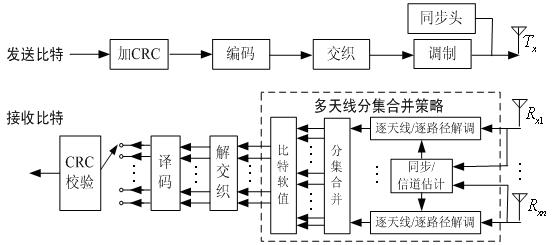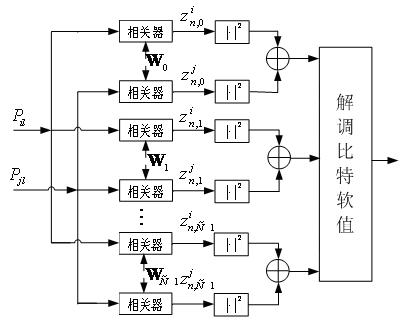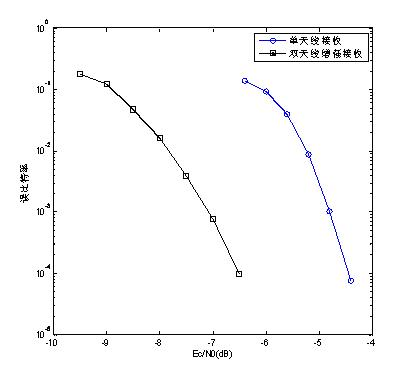Short-wave multi-antenna signal enhancement receiving method
A signal enhancement and receiving method technology, applied in diversity/multi-antenna systems, space transmit diversity, digital transmission systems, etc., can solve problems such as low-power signal fading, low antenna transmit gain, and affecting the receiving performance of short-wave fixed stations. Achieve the effect of improving anti-fading performance and improving receiving performance
- Summary
- Abstract
- Description
- Claims
- Application Information
AI Technical Summary
Problems solved by technology
Method used
Image
Examples
Embodiment
[0036] Taking dual-antenna reception as an example in the present invention, adopting the two-path channel model suggested by CCIR, the specific implementation steps are as follows:
[0037] In the first step, 16 CRC check bits are added to the information bits to be sent, and the specific generator polynomial used is . After LDPC encoding with a code rate of 1 / 2, row-column interleaving is performed;
[0038] In the second step, the interleaved data is modulated into a corresponding orthogonal spread spectrum sequence every 6 bits , where the orthogonal spread spectrum sequence uses a Walsh code with a length of 64 bits. A sync header is added before the modulation sequence is sent, and a spread spectrum code with good autocorrelation characteristics is used when the sync header is transmitted;
[0039] In the third step, the receiving end uses two antennas for reception. Firstly, after using the received synchronization header to extract the synchronization information ...
PUM
 Login to View More
Login to View More Abstract
Description
Claims
Application Information
 Login to View More
Login to View More - R&D
- Intellectual Property
- Life Sciences
- Materials
- Tech Scout
- Unparalleled Data Quality
- Higher Quality Content
- 60% Fewer Hallucinations
Browse by: Latest US Patents, China's latest patents, Technical Efficacy Thesaurus, Application Domain, Technology Topic, Popular Technical Reports.
© 2025 PatSnap. All rights reserved.Legal|Privacy policy|Modern Slavery Act Transparency Statement|Sitemap|About US| Contact US: help@patsnap.com



